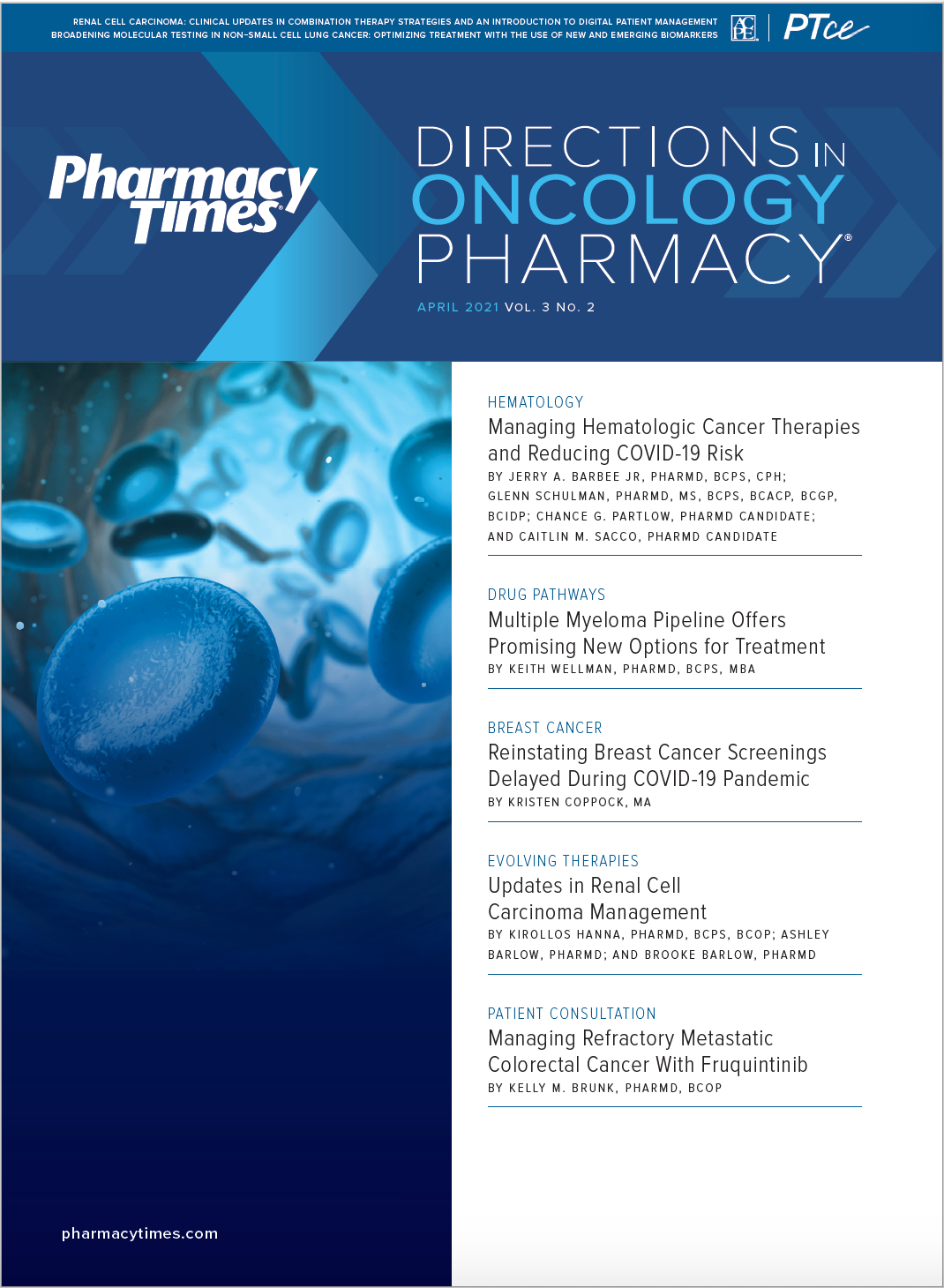Publication
Article
Pharmacy Practice in Focus: Oncology
Using Data to Optimize Use of CDK 4/6 Inhibitors for Metastatic HR+ Breast Cancer
Author(s):
Clinicians should consider the impact on subsequent therapies, overall survival, and median time to definitive deterioration with CDK 4/6 inhibitors.
A rapid development of aromatase inhibitors and biotherapies for breast cancer has taken place over the last several decades. Findings from recent studies have given clinicians new guidelines on optimizing the use of cyclin-dependent kinase 4/6 (CDK 4/6) inhibitors in patients with metastatic hormone receptor–positive (HR+) breast cancer.1
Last century saw a huge broadening of knowledge regarding the treatment of breast cancer, said Debu Tripathy, MD, of The University of Texas MD Anderson Cancer Center, in a session at the 38th Annual Miami Breast Cancer Conference®. Investigators first discovered that estrogen drives breast cancer in 19511 and tamoxifen, the first in the class of selective estrogen receptor modulators, was approved by the FDA in 1978.2
Three CDK 4/6 inhibitors have been approved by the FDA: palbociclib (Ibrance; Pfizer), ribociclib (Kisqali; Novartis), and abemaciclib (Verzenio; Eli Lilly and Company). Although all 3 therapies inhibit kinases, Tripathy said, ribociclib and palbociclib show more specific activity than abemaciclib.1
Investigators have reported similar results in clinical trials for all the drugs, which have roughly doubled progression-free survival (PFS) rates and shown a 20% to 30% reduction in deaths. For example, Tripathy said results from the MONALEESA-7 trial (NCT02278120) of endocrine therapy with or without ribociclib demonstrated an approximately 29% reduction in death rate among participants who received ribociclib.1
In addition to these important metrics, Tripathy said clinicians should consider the effects on subsequent therapies, overall survival, and median time to definitive deterioration. The impact on subsequent therapies, also known as PFS2, has been significantly prolonged with ribociclib, he pointed out. In clinical trials, investigators observed that time to chemotherapy was also delayed with ribociclib.1
Upon looking at overall survival rates, Tripathy said palbociclib has shown some promising results. The PALOMA-3 (NCT01942135) trial tested fulvestrant either with or without palbociclib and found a trend toward overall survival in patients who received the combination.1
Similarly, the MONALEESA-3 trial (NCT02422615) examined fulvestrant with or without ribociclib in patients, and findings showed that both groups had improvement in PFS, overall survival, and time to chemotherapy. Notably, results from MONALEESA-7 showed that time to deterioration, in more than 10% of patients, was lengthened in the ribociclib arm. Investigators observed similar improvements in subscales of pain and fatigue.1
Tripathy concluded by saying that further research is needed into how these CDK 4/6 inhibitors impact subsequent therapies. For example, PALOMA-3 looked at PFS2 and found that overall time was still prolonged but might have been slightly shorter in second-line treatments. Although these cannot be considered unbiased data, Tripathy said they were still interesting. Other trials are also looking at this important metric, and according to Tripathy their findings will help guide treatment decisions.1
REFERENCES
- 1. Tripathy D. Optimizing use of CDK4/6 inhibitors for metastatic hormone receptor-positive breasT cancer. Presented at: 38th Annual Miami Breast Cancer Conference®; March 4-7, 2021; Virtual.
- 2. Milestones in cancer research and discovery. National Institutes of Health. Updated August 31, 2020. Accessed March 24, 2021. https://www.cancer.gov/research/progress/250-years-milestones







